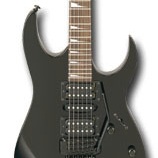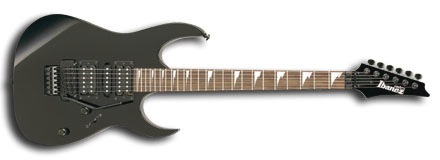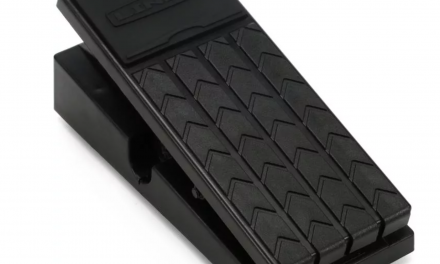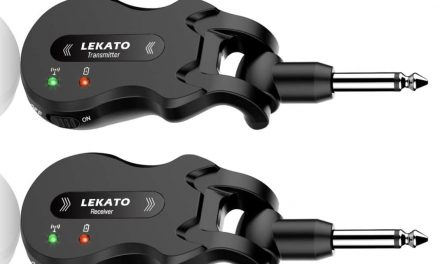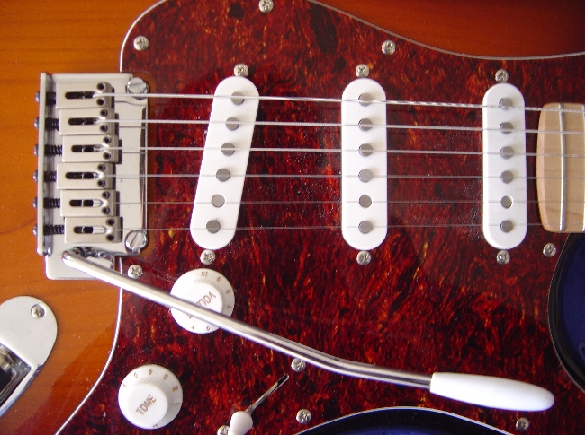It’s 7 am on a Sunday morning and I’m sitting in The Breakfast Station in New Port Richey, Florida, eating breakfast and blogging about guitars. I’m practicing for my retirement from web development – this is probably what I’ll be doing when I’m an old fart. Which isn’t too far away.
Here it is:
The Ibanez Gio GRG270DX7WTFPOSOMG69. I “bought” this guitar new from Guitar Center for $279. Actually I traded in a Fender Mustang II amp and some other stuff that I needed to get rid of, and I took a bath on the trade. The dumbest thing you can do with gear is trade it in at a music store. You’re going to get 25% of what you paid at Sam Ash and 33% of what you paid at Guitar Center. That’s not 100% reliable info – it depends on the stores, the managers, and the gear. You’ll get double that if you use craigslist or ebay. But you’ll have to deal with strangers coming to your house or having to ship your stuff. For me, not worth the hassle.
Anyway, I picked up this guitar because I have always wanted a guitar with a locking trem system. I don’t play metal, except screwing around for fun, so it was always hard to justify. But I played this guitar, and for $279, it might my definition of a great budget guitar. It sounds good, it plays good, low action, it stays in tune, and it’s designed for speed playing.
Rose
The hardest part? Figuring out what guitar I actually had. It didn’t come with paperwork (or a trem bar, at first – they had to find one for me,) so a lot of time on Google helped me determine that I had the GRG270DX. Ibanez, like many other companies, still have not figured out that product names matter. It’s not enough to say “Gio” because there are both good and bad guitars in the Gio range. Further, once you’ve named a product, putting the name ON the product would be a good idea.
Specs
- 24 medium jumbo frets
- ILT Locking Trem System with locking nut
- Basswood body
- Bound Rosewood fingerboard
- Maple neck
- HSH Pickup Configuration
- Pickups are STD-H1, STD-S4, STD-H2
- Made in China
- Kewl sharktooth inlays
Observations
The neck is wide and flat and built for shredding – not so much fun if you’re trying to put your thumb around it, but that’s not what this thing was made for. It feels like pretty much every other sub-$500 shred neck. The pickups are hot and designed for high gain – the clean sound that comes out of this guitar is serviceable and unexceptional. The single coil middle pickup and 5 way switch are like the piece of parsley on the plate of a 24 ounce steak. The overall sound of the pickups is decent but slightly muddy – I replaced the bridge humbucker with a Seymour Duncan Invader and it gave me more gain and more clarity.
As for the locking trem? I took it apart and put it back together to learn how it worked, and it was an education. This is a bad idea for any beginner – simply changing to new strings of the same gauge will be a big bag of hurt to a novice still learning to tune a guitar. For someone comfortable adjusting action and intonation, it’s not bad once you get the hang of it.
The trem bar is too loose out of the box, and when you use the bar, it knocks a little bit. This can be adjusted by tightening a hex screw… however, doing so requires the precision of a surgeon and the strength of Hercules. You get what you don’t pay for when you buy a sub-$300 guitar with locking trem. To be fair, once adjusted, it’s fine, and I have played some LTD guitars in this price range that did not have this issue.
Does the thing stay in tune when you dive-bomb it? Yup. Which is why you’d buy this guitar.
So was it a good buy? Yes, it was, because I like to play it. It does what it’s supposed to do, and it looks cool and sounds good. Can you tell the difference between this guitar and one of the more expensive Ibanez metal machines? Definitely yes. But the biggest reason to pick up a guitar like this is to have a locking trem in your collection, OR to have a decent guitar if you play metal. Just remember that a locking trem is more complicated than a regular trem or hardtail. You need to be comfortable with the idea of using your little hex wrenches. But if you are, you can find dive-bomb nirvana on this relatively inexpensive guitar.
March 8, 2014 Follow-up:
I ended up replacing the bridge pickup with a Seymour Duncan Invader that I had, which runs around $80. This made the guitar even more metal. But today, I will be selling it to my friend and brother-in-law for a crazy low amount of money because he’s family and a good guy. Why am I selling it? I just didn’t bond with it. It was fun to play, it sounded killer on metal stuff, but I’m not really a metal player. And when I bought my PRS SE Custom 24, I pretty much stopped playing almost all of my other guitars. And then when I replaced the SE’s tuners with Grover locking tuners, I had a trem system that, while not as good as the locking trem on the Ibanez, would be good enough to handle some whammy bar abuse.
I do like this guitar. But I don’t want to keep a guitar I never play – it doesn’t make sense. Next out the door will likely be my Yamaha classical guitar, which I never ever play. You lose money when you buy a budget guitar and sell it for far less, but it’s not about the money for me – it’s about the experience of owning and playing different guitars. I’d wanted a locking trem forever. After owning one, I can say that I love them but I don’t really need them or use them.

